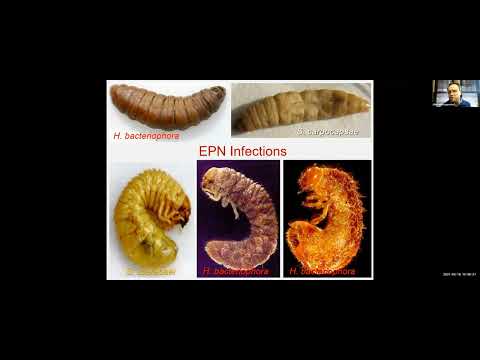Understanding Turfgrass Pests and Biocontrol: Insights from Dr. Albrecht Koppenhofer
In this informative session, Dr. Albrecht Koppenhofer from Rutgers University shares his extensive knowledge on turf diseases and pests, particularly focusing on entomopathogenic nematodes (EPNs) for biological control. With over 100 refereed publications and significant recognition in his field, Dr. Koppenhofer discusses the biology, application, and efficacy of various EPNs against common turf pests such as white grubs, billbugs, and black cutworms. Discover the latest research, best practices for application, and insights into how specific nematodes can serve as effective biocontrol agents in turfgrass management. This in-depth presentation is a must-watch for professionals in turf management and those interested in sustainable pest control methods.
00:00 Welcome and Introduction
00:20 Dr. Albrecht Koppenhofer’s Background
01:31 Introduction to Entomopathogenic Nematodes (EPNs)
04:02 Life Cycle and Behavior of EPNs
06:43 Commercialization and Application of EPNs
09:06 Handling and Storage of EPNs
15:20 EPNs and Pesticides
16:19 EPNs for White Grubs Control
28:09 EPNs for Billbugs Control
30:18 Advancements in Neonicotinoids and Billbug Control
31:56 Annual Bluegrass Weevil: A Growing Threat
33:28 Research and Trials on Nematode Efficacy
36:08 Black Cutworm: Challenges and Solutions
38:25 Nematode Application Techniques and Best Practices
40:21 Conclusion and Q&A
Dr. Albrecht Koppenhofer from Rutgers University provided an in-depth presentation on entomopathogenic nematodes (EPNs) and their application in turfgrass management. EPNs are obligate lethal parasites that carry symbiotic bacteria, effectively controlling a range of insect pests. These nematodes are commercially available in several species, such as Steinernema carpocapsae and Heterorhabditis bacteriophora, each targeting specific pests like caterpillars, billbugs, and white grubs.
The life cycle of EPNs involves entering the host through natural openings, releasing bacteria that kill the insect, and reproducing inside the host before emerging to continue the cycle. Proper handling and application are crucial for their efficacy, as they are sensitive to environmental conditions. Research indicates that EPNs can effectively control pests in turfgrass, particularly when applied at the right time, with adequate moisture, and possibly in combination with chemical insecticides.
Koppenhofer’s guidance emphasizes optimizing nematode use through split applications and careful timing to enhance pest control outcomes, making EPNs a valuable tool in integrated pest management (IPM) programs for turfgrass.
